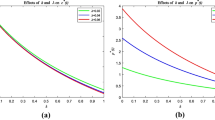Abstract
This paper examines the optimal portfolio choice in the presence of risky labor income, retirement horizon and shadow costs of incomplete information and short sales. The optimal allocation to stocks is larger for employed investors than for retired investors within idiosyncratic labor income risk, incomplete information and short sales. Investors’ willingness to save is increased when increasing idiosyncratic labor income risk in the presence of incomplete information and short sales, while it is decreased when retired investors still keep partial of their income flow. Hence, they reduce their stock portfolio allocation towards the level of retired investors. The presence of a positive correlation between labor income and stock returns reduces stockholdings below the level of retired investors within the assumptions of the existence of shadow costs of incomplete information. Our results generalize previous findings in the literature by accounting for the additional impact of information costs and short sales constraints.










Similar content being viewed by others
References
Barberis, N. C. (2000). Investing for the long run when returns are predictable. Journal of Finance, 55, 225–264.
Bellalah, M. (2018a). On information costs, short sales and the pricing of extendible options, steps and Parisian options. Annals of Operations Research, 262, 361–387.
Bellalah, M. (2018b). Pricing derivatives in the presence of shadow costs of incomplete information and short sales. Annals of Operations Research, 262, 389–411.
Bellalah, M., Bradford, M., & Zhang, D. (2016). A general theory of corporate international investment under incomplete information, short sales and taxes. Economic Modelling, 58, 615–626.
Bellalah, M., & Wu, Z. (2008). A simple model of corporate international investment under incomplete information and taxes. New York: Science Business Media, LLC.
Bellalah, M., & Zhang, D. (2017). A model for international capital markets closure in an economy with incomplete markets and short sales. Economic Modelling, 67, 316–324.
Bjork, T. (2009). Arbitrage theory in continuous time. Oxford: Oxford University Press.
Blanchard, O. J. (1985). Debt, deficits, and finite horizons. Journal of Political Economy, 93, 223–247.
Bodie, Z., Merton, R. C., & Samuelson, W. F. (1992). Labor supply flexibility and portfolio choice in a life cycle model. Journal of Economic Dynamics and Control, 16, 427–449.
Campbell, J. Y., & Viceira, L. M. (1999). Consumption and portfolio decisions when expected returns are time varying. Quarterly Journal of Economics, 114, 433–495.
Campbell, J. Y., & Viceira, L. M. (2001). Who should buy long-term bonds? American Economic Review, 91, 1–29.
Elmendorf, D. W., & Kimball, M. S. (2000). Taxation of labor income and the demand for risky assets. International Economic Review, 41, 801–832.
Gertler, M. (1997). Government debt and social security in a life-cycle economy. Carnegie-Rochester Conference Series on Public Policy, 50, 61–110.
Gollier, C., & Pratt, J. W. (1996). Risk vulnerability and the tempering effect of background risk. Econometrica, 64, 1109–1123.
Heaton, J., & Deborah, L. (1997). Market frictions, savings behavior and portfolio choice. Macroeconomic Dynamics, 1, 76–101.
Koo, H. K. (1998). Consumption and portfolio selection with labor income I: Evaluation of human capital. Mathematical Finance, 50(1), 219–243.
Merton, R. C. (1971). Optimum consumption and portfolio rules in a continuous-time model. Journal of Economic Theory, 3, 373–413.
Merton, R. C. (1987). A simple model of capital market equilibrium with Incomplete Information. Journal of Finance, 42, 483–510.
Pratt, J. W., & Zeckhauser, R. J. (1987). Proper risk aversion. Econometrica, 55, 143–154.
Saaty, T. L. (1980). The analytic hierarchy process: planning, priority setting, resource allocation, ISBN 0-07-054371-2. McGraw-Hill.
Saaty, T. L. (2008). Decision making with the analytic hierarchy process. International Journal of Services Sciences, 1, 83–98.
Saaty, T. L. (2012). Decision making for leaders: The analytic hierarchy process for decisions in a complex world (3rd ed.). Pittsburgh: RWS Publications.
Vasicek, A. (2013). General equilibrium with heterogeneous participants and discrete consumption times. Journal of Financial Economics, 108, 608–614.
Viceira, L. M. (2001). Optimal portfolio choice for long-horizon investors with nontradable labor income. The Journal of Finance, 56(2), 433–470.
Wu, C., Li, Q., & Wei, K. C. (1996). Incomplete information capital market equilibrium with heterogonous expectations and short sale restrictions. Review of Quantitative Finance and Accounting, 7, 119–136.
Yong, J., & Zhou, X. (1999). Stochastic controls: hamiltonian systems and HJB equations. New York: Springer.
Author information
Authors and Affiliations
Corresponding author
Additional information
D. Zhang: This author is supported in part by Natural Science Foundation of China Grant #11401345.
Rights and permissions
About this article
Cite this article
Bellalah, M., Xu, Y. & Zhang, D. Intertemporal optimal portfolio choice based on labor income within shadow costs of incomplete information and short sales. Ann Oper Res 281, 397–422 (2019). https://doi.org/10.1007/s10479-018-2901-4
Published:
Issue Date:
DOI: https://doi.org/10.1007/s10479-018-2901-4
Keywords
- Optimal portfolio choice
- Information cost
- Short sales
- Consumption
- Labor income
- Analytic hierarchy process




